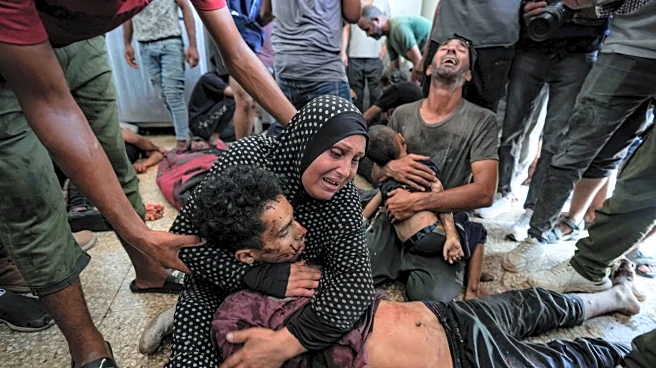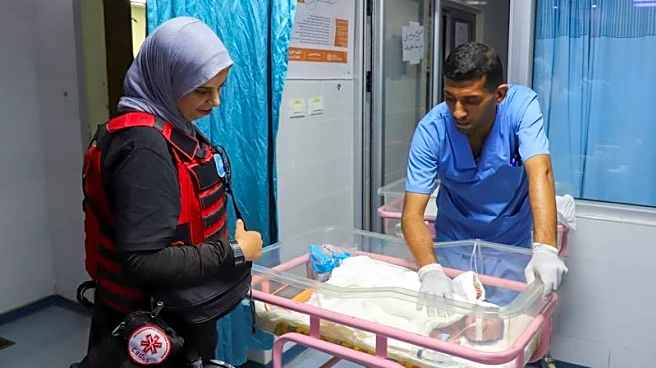What's Happening?
A recent United Nations study has highlighted severe malnutrition among children in Gaza, with over 54,600 children under the age of five potentially acutely malnourished. The study, published in The Lancet, indicates that 16% of children aged six months to five years are suffering from acute wasting, a life-threatening form of malnutrition. The situation has been exacerbated by ongoing conflict and restrictions on food and aid, leading to catastrophic levels of hunger. The study relied on screenings of nearly 220,000 children across various health centers in Gaza. Experts have called for immediate and sustained humanitarian assistance to address the crisis.
Why It's Important?
The findings underscore the dire humanitarian situation in Gaza, where food shortages and military conflict have led to severe malnutrition, particularly among children and pregnant women. The restrictions on aid and food supplies have worsened the crisis, with hospitals overwhelmed by malnourished children. The study's revelations could prompt international pressure on Israel to ease restrictions and allow more humanitarian aid into the region. The situation poses a significant risk to the health and survival of thousands of children, highlighting the urgent need for international intervention and support.
What's Next?
The study's publication may lead to increased calls for international intervention and pressure on Israel to allow more humanitarian aid into Gaza. Aid organizations and governments may seek to negotiate terms for increased aid flow and support for the affected population. The ongoing conflict and political dynamics in the region will continue to influence the availability and distribution of aid, with potential diplomatic efforts aimed at resolving the crisis.
Beyond the Headlines
The humanitarian crisis in Gaza raises ethical and legal questions about the responsibilities of nations in conflict zones to protect civilian populations. The situation highlights the long-term impact of military conflict on vulnerable populations, particularly children, and the need for sustainable solutions to address food security and health care in conflict-affected areas.












